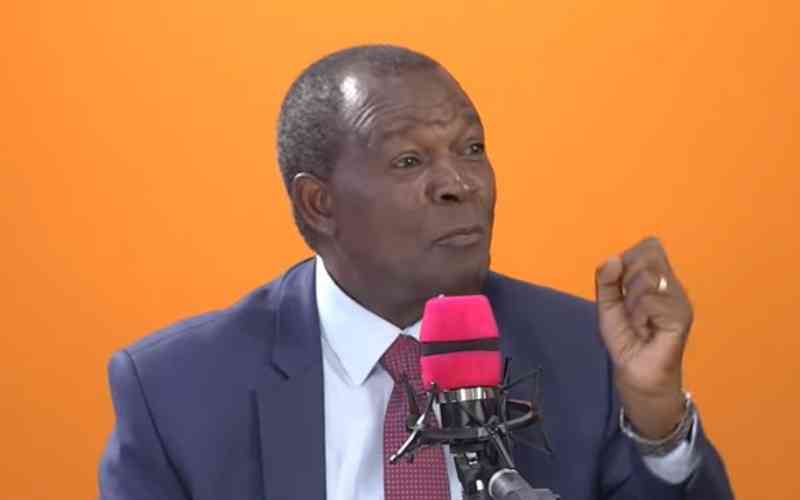The shilling is expected to depreciate further against the dollar this week as importers buy more of the US currency in anticipation of end-month demand.
Traders expect the local unit to continue coming under intense pressure, and forecast it to trade between 96 and 97 units against the dollar.
When the markets closed on Friday, the Central Bank of Kenya (CBK) quoted the shilling at 96.07 buying and 96.23 selling against the greenback, with the mean rate being 96.15.
Diverse opinions
Currency dealers, financial analysts and bankers have given diverse opinions, forecasts and explanations as to why the shilling is weakening against the dollar, and why interventions from the CBK aren’t stemming the slide.
“What we are witnessing in the forex market is nothing out of expectations, therefore, there is no need for panic,” said Kenya Bankers Association (KBA) CEO Habil Olaka.
“There is presently a high demand for dollars from importers, including oil companies, who have to procure their supplies in hard currency. It is also the season when foreign companies operating in the country remit their profits abroad in the form of dividends to foreign shareholders.”
He added that in the global foreign exchange market, the dollar has been appreciating tremendously, a trend that also hurt the shilling.
Its appreciation has largely been attributed to economic recovery and the prospect of an increase in interest rates in the US.
“Other regional currencies, such as the Uganda and Tanzania shilling, have performed much worse than the Kenya shilling. There is, therefore, no need for the market to panic,” added Mr Olaka.
“If there is panic, importers will buy dollars today rather than wait for the shilling to weaken further. On the other hand, local exporters who get paid in dollars will horde the currency in the hope of selling it later to benefit from a weaker shilling. In this scenario, the weakening of the shilling would not be supported by fundamentals.”
Signs the local forex market could be sliding into a panic were noted last week when CBK Deputy Governor Haron Sirima hinted that the shilling’s decline could partly be a result of speculative activity and not market fundamentals.
“Kenya’s central bank has seen some speculation on the shilling and will scale up its open market operations to stem market volatility,” Dr Sirima said.
To calm the market, he hinted that CBK may use an International Monetary Fund (IMF) credit facility to contain volatility, sentiments that were echoed by Treasury Cabinet Secretary Henry Rotich.
And though the local forex market calmed after these remarks, the forecast is that the shilling could still come under pressure in the coming weeks. Analysts have also dismissed the IMF intervention, saying it would amount to a waste of resources.
Stay informed. Subscribe to our newsletter
“We do not think CBK has been aggressively intervening in the foreign exchange market. In fact, the weakening shilling is not necessarily bad or unusual. The Kenya currency has performed exceptionally well compared to other currencies in the last two years,” said Faith Waitherero, an analyst at Standard Investment Bank.
She added that while the shilling has weakened against the dollar, it has strengthened against the euro and other major global currencies.
Low inflows
Further, over the last few months, Kenya’s decreased export earnings from tea and coffee, as well as low tourist numbers, have led to low inflows of foreign currency into the economy.
“While heavy import demand for the dollar is certainly a concern, efforts should be made towards substituting this with domestic supplies. This can be done by building up the capacity of domestic manufacturers and suppliers,” said Ms Waitherero.
“On the other hand, a weaker local currency helps tea, coffee and tourism sectors through higher incomes, given that foreigners find them affordable.”
 The Standard Group Plc is a
multi-media organization with investments in media platforms spanning newspaper
print operations, television, radio broadcasting, digital and online services. The
Standard Group is recognized as a leading multi-media house in Kenya with a key
influence in matters of national and international interest.
The Standard Group Plc is a
multi-media organization with investments in media platforms spanning newspaper
print operations, television, radio broadcasting, digital and online services. The
Standard Group is recognized as a leading multi-media house in Kenya with a key
influence in matters of national and international interest.
 The Standard Group Plc is a
multi-media organization with investments in media platforms spanning newspaper
print operations, television, radio broadcasting, digital and online services. The
Standard Group is recognized as a leading multi-media house in Kenya with a key
influence in matters of national and international interest.
The Standard Group Plc is a
multi-media organization with investments in media platforms spanning newspaper
print operations, television, radio broadcasting, digital and online services. The
Standard Group is recognized as a leading multi-media house in Kenya with a key
influence in matters of national and international interest.








